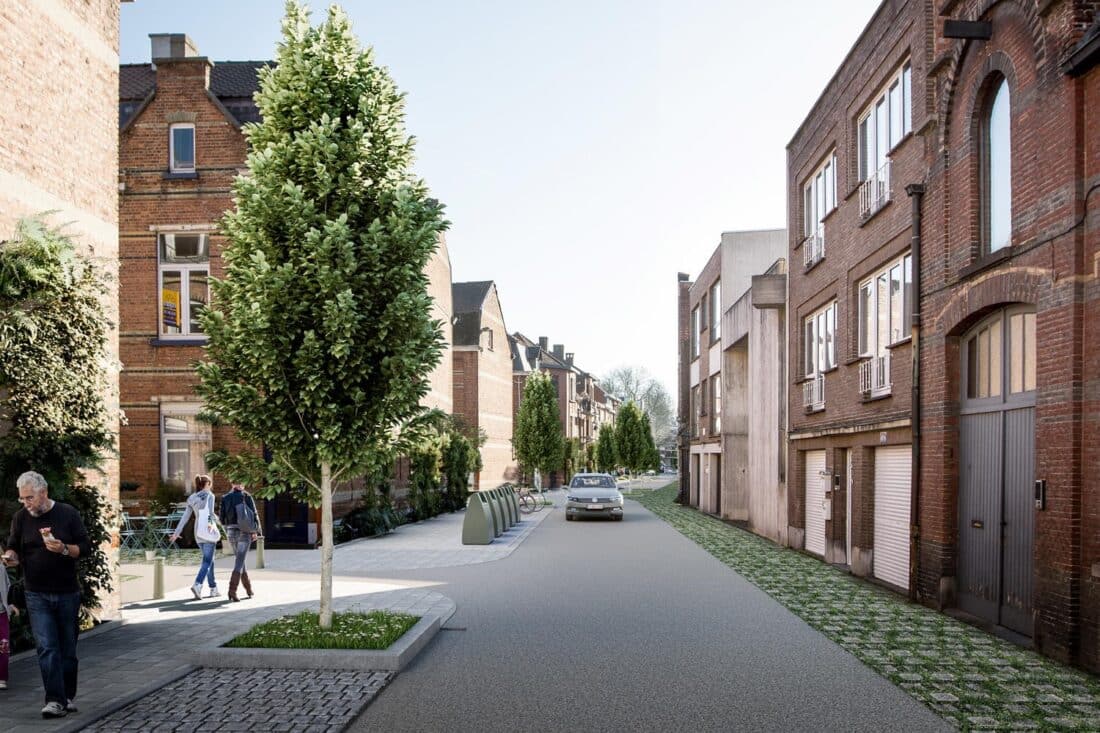Hertstraat, Ghent


Greening and depaving of 6 streets in Ghent
Between the Muinkschelde River and King Albert I Park lies a piece of Ghent with a special history. For centuries, the Muinkmeersen remained a marshy area within the city walls where the monks of St. Peter’s Abbey bleached linen, among other things. In 1851, part of it was set up as a zoo, after which the city bought the land and developed it as a combination of an urban park, avenues with mansions and avenues with workmen’s houses. The neighbourhood became an example of urban development innovation from the early 20th century.
One hundred years later, the City of Ghent wants to reclaim the historic district as an example of urban development innovation. Not in response to population growth and housing a growing working class this time, but rather to prepare the city for tomorrow’s challenges. Our Public Spaces team is responsible for the entire study assignment, from study to design, tendering and supervision of the works.
Climate change is at the top of the City of Ghent’s list of challenges. Periods of extreme heat and heavy rainfall are becoming more frequent, as the city’s many pavements create an urban heat island effect. The design of the Hertstraat cluster therefore maximises the use of depaving. This frees up space for façade gardens up to 2 metres (!) wide, tree basins and wadis. There is maximum possibility for water infiltration in the many green areas and permeable pavements. The greenery consists of a combination of robust and climate-resistant plant species that thrive in dry and temporarily wet soils. The innovative design allows current and future residents to find a place amongst the greenery in the city centre.
The streets will be redesigned as a residential area – as living streets with a strong residential function. This should not only slow down the speed of traffic, but also create a shared space with seating and play incentives. A place where residents can meet up.
A less visible aspect, but a significant part of the project, is the construction of sewers. Close to the Lower Scheldt and within the highly urbanised context of Ghent, this is inevitably a challenge.
Such a drastic change requires support. For this reason, we developed an extensive participation and communication process, where local residents could have a seat at the design tables to shape their street with us.
Both the climate-resilient design and strong participatory process earned bronze at the 2020 VLARIO Innovation Award ceremony.







"Despite strong support, an objection was still filed during the permit process. This teaches us that we must remain attentive to different visions that do not always emerge strongly, and how important it is to comprehensively justify choices made."

